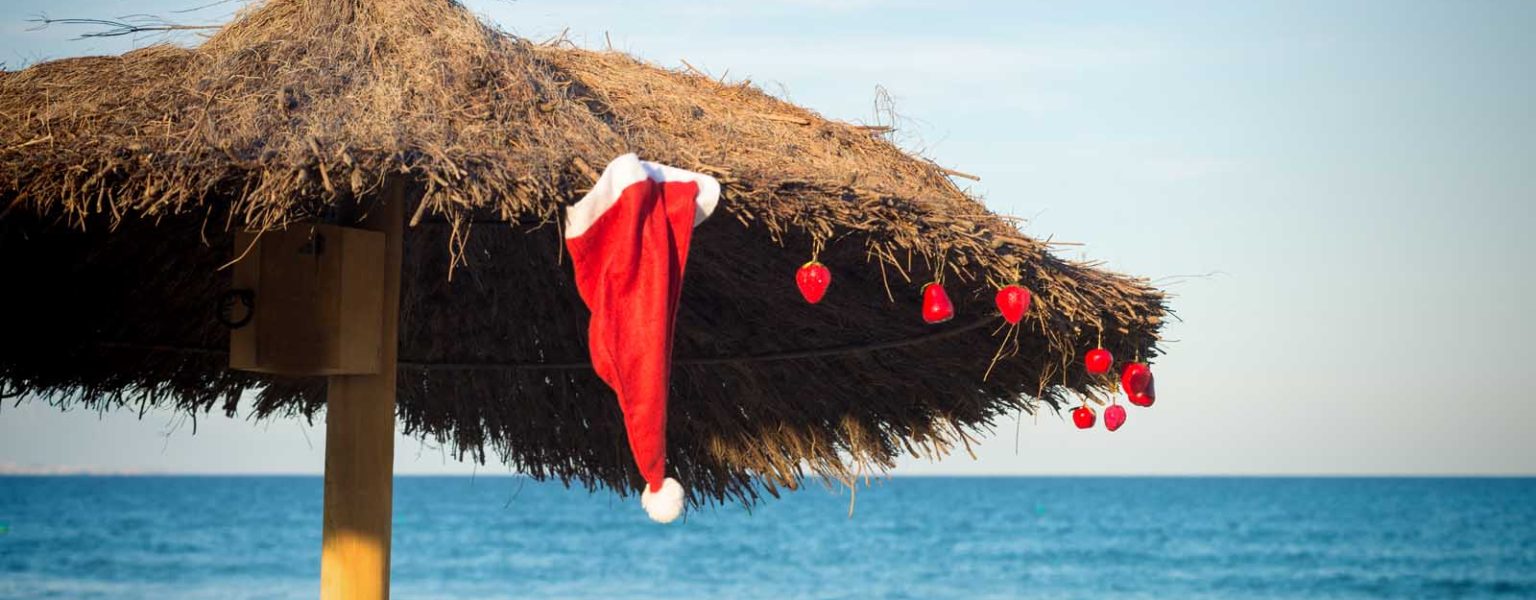As December winds blow, the land of Mexico transforms into a festive paradise. Celebrating Christmas in Mexico combines a unique blend of indigenous and Spanish influences. Mexican Christmas traditions blend ancient influences from the Maya and Aztecs to modern icons like Santa Claus and Christmas trees. Christmas Mexican culture celebrates with processions and feasts, Christmas plays and Spanish Christmas carols. Let us take you on a journey through Mexico’s heartwarming and spirited Christmas celebrations, where every corner tells a story of history, faith, and community joy.
Discover the essence of a Mexican Christmas – an unforgettable fusion of past and present, creating memories that last a lifetime. From its bustling markets and mouthwatering culinary delights, Mexico offers an unforgettable Christmas experience.
Christmas Traditions in Mexico
When do People Celebrate Christmas in Mexico?
Día de la Virgen de Guadalupe on December 12th Las Posadas from December 16th to 24th Noche buena on December 24th Día de Los Reyes Magos on January 6th
So, let’s begin with the celebrations throughout the country during the festive season.
The Heart of Mexican Christmas: Las Posadas and Noche Buena
At the heart of Mexican Christmas lie two beloved traditions: Las Posadas and Noche Buena. Las Posadas are nine nights of reenactments, representing Mary and Joseph’s journey to Bethlehem and their search for a place to stay before the birth of Jesus Christ. This procession is a symbol of faith and devotion, capturing the essence of the Christmas story.
On the other hand, Noche Buena is a joyous family gathering on Christmas Eve, featuring a late-night Christmas dinner feast with traditional Mexican dishes and gift exchanges.
The Nine Nights of Las Posadas
Beginning on December 16th and continuing for nine nights, Las Posadas represents the nine months that the Virgin Mary was pregnant with Jesus. Children lead the processions decked out in costumes, playing the parts of angels, shepherds, Mary, and Joseph.
But all good things must come to an end, and Las Posadas is no different. On Christmas Eve, everyone comes together to break a piñata, symbolizing the victory of good over evil. It’s a pretty awesome way to wrap up the celebration, if you ask me.
Noche Buena: A Feast of Joy
Christmas Eve in Mexico is a time of joy and togetherness known as Noche Buena. Families gather to share a festive meal, with traditional dishes and Mexican food such as tamales and pozole taking center stage. The exchange of gifts and the warm glow of Christmas lights accompanies this delightful feast.
For many Mexicans, attending Misa de Gallo, a midnight Mass, is a huge part of Noche Buena, commemorating the birth of Jesus and celebrating the true meaning of Christmas.
Festivals and Parties During the Christmas Season
Piñata, Pastorelas & Posada parties
Piñatas, Pastorelas, and Posada parties are essential to Mexican Christmas celebrations. Colorful piñatas filled with candy and toys bring excitement and laughter to the festivities, while Pastorelas, theatrical performances depicting the journey of the shepherds to the Nativity, entertain and inspire.
Posada parties, featuring processions, singing, and piñata-breaking, gather friends and family together to celebrate the true meaning of Christmas.
Decorations That Tell a Story: Mexican Christmas Aesthetics
Then there are the Luminarias, which are small paper lanterns that create a warm, inviting glow. These light up the streets and homes, casting a magical light on the festive season.
And, of course, it wouldn’t be Christmas without a Christmas tree. Mexican Christmas trees are decorated with ornaments and lights, adding a touch of festive cheer to homes and public spaces.
Crafting the Scene: Nacimientos
Nacimientos are nativity displays lovingly crafted by Mexican families. These elaborate scenes are the main attraction in many Mexican homes during the Christmas season, symbolizing love, peace, and tranquility. The figures in the nativity scene, like Mary, Joseph, and Jesus, are usually made of ceramic, clay, or plastic, and some scenes even feature dried flowers known as ‘immortal flowers’ or ‘always alive’ for a unique touch.
Nacimientos bring the Christmas story to life on Christmas Day, inviting reflection and reverence.
Lighting Up the Festivities: Luminarias and Christmas Trees
The Spiritual Essence: Religious Ceremonies and Figures
Honoring the Virgin: Día de la Virgen de Guadalupe
The Arrival of the Wise Men: Día de Los Reyes Magos
Día de Los Reyes Magos, celebrated on January 6th, commemorates the arrival of the Wise Men, who followed a star to find baby Jesus and presented him with gifts of gold, incense, and myrrh. This day is marked by the giving of gifts to children, just as the Wise Men did, and the sharing of Rosca de Reyes, a sweet bread adorned with hidden baby Jesus figurines.
Taste of Christmas: Mexico’s Seasonal Delicacies
When it comes to Mexican Christmas food, your senses are in for a treat. Each dish boasts unique flavors and centuries-old traditions. Tamales, with their corn dough base, are a staple.
Buñuelos add a sweet touch to the festive spread. Ponche Navideño brings warmth and comfort to the celebrations, while Rosca de Reyes is a festive food that often finds its place under Mexican Christmas trees. These dishes truly add a flavorful touch to the celebrations.
Tamales: Wrapped in Tradition
Once everything is all mixed and filled, the tamales are wrapped up in corn husks or banana leaves and steamed until they’re perfectly cooked.
It’s not just a one-size-fits-all kind of deal, though. Depending on where you are in Mexico, you might get to try some unique local varieties. Sinaloan and Michoacán tamales, for instance, add their own special touch to this traditional dish.
So, no matter where you find yourself in Mexico during Christmas, you’re bound to come across some version of this delicious dish. Trust me, your taste buds will thank you!
Sweet Celebrations: Buñuelos and Ponche Navideño
Rosca de Reyes
The person who finds the figurines in their slice of Rosca de Reyes is traditionally responsible for hosting the Día de la Candelaria party on February 2nd. This delicious bread is a delightful way to share the joy and blessings of the Christmas season.
Christmas Across Mexico: Regional Variations
Then there’s the coastal festivities in Southern Mexico, where Christmas is celebrated with a tropical twist. Imagine warm beach parties, dazzling fireworks, and the taste of regional dishes that are as colorful as the celebrations themselves.
Of course, we can’t forget about Las Posadas, a reenactment of Mary and Joseph’s search for a place to stay in Bethlehem. This tradition is filled with processions, songs, and a sense of community that brings the biblical story to life.
Another fun-filled tradition is the piñatas, often filled with candy and toys. During Christmas celebrations, it’s a joyous moment when the piñata is broken and the treats inside spill out for everyone to enjoy.
Finally, there’s the Feast of the Three Kings on January 6th, where children eagerly await their gifts, much like kids on Christmas morning. This day marks the end of the Christmas season in Mexico, but the memories of the festivities linger on.
So, you see Christmas in Mexico isn’t just a one-size-fits-all celebration. Each region brings its own distinctive flavor to the holiday season, making it a truly special time of the year!
Southern Traditions: Oaxaca’s Night of the Radishes
Oaxaca City hosts an event known as the Night of the Radishes is a unique southern Mexican tradition celebrated on December 23rd each year. This event features incredible radish carvings, with artists showcasing their skills by transforming ordinary radishes into elaborate sculptures and designs.
The Night of the Radishes is a colorful and lively celebration, adding a touch of creativity and artistry to the Christmas festivities.
Coastal Celebrations: Caribbean Coast Festivities
The culinary scene is just as vibrant, with regional dishes making their grand appearance. These aren’t your everyday meals, but festive delights that are as colorful and exciting as the celebrations.
As the night deepens, homes and streets are adorned with colorful lights and nativity scenes, painting a beautiful picture of the holiday season. The Midnight Mass on Christmas Eve is a special event, bringing everyone together in a moment of peace and unity.
And of course, the festivities wouldn’t be complete without the traditional Christmas meals shared with family and friends. These meals are more than just food; they’re a celebration of love, togetherness, and the joy of the season.
Modern Influences and New Traditions
From St. Nicholas to Santa Claus
Santa Claus has become increasingly popular in Mexico, bringing gifts and joy to children during the Christmas season. Though not originally part of traditional Mexican Christmas, Santa Claus was introduced to the country in the early 1900s and has since become a beloved figure, delivering presents to children on Christmas Eve.
This contemporary influence has introduced a new facet of excitement and magic to the Mexican Christmas experience.
El Niñito Dios
El Niñito Dios, a recent figure in Mexican Christmas, symbolizes baby Jesus and is frequently placed in nativity scenes. While not part of traditional Mexican Christmas celebrations, El Niñito Dios has become a popular symbol of the holiday season, representing the true meaning of Christmas and the birth of Jesus.
This modern addition to Mexican Christmas traditions reflects the evolving nature of the holiday and the blending of old and new customs.
Important Days During the Christmas Season
Los santos inocentes
Los Santos Inocentes is celebrated on December 28th and is a day of pranks and mischief, commemorating the biblical story of King Herod and the innocent children he ordered to be killed. Similar to April Fool’s Day in other countries, Los Santos Inocentes is a lighthearted break from the more solemn aspects of the Christmas season.
Dia de los Reyes
Día de Los Reyes, also known as Three Kings’ Day, is observed on January 6th, marking the conclusion of the Christmas season in Mexico. This day honors the arrival of the Three Wise Men, who brought gifts to the baby Jesus. In keeping with this tradition, children receive presents on this day, and families gather to share the Rosca de Reyes, a sweet bread with hidden baby Jesus figurines symbolizing good fortune.
Día de Los Reyes concludes the Mexican Christmas season on a joyful note, celebrating the spirit of giving and the bonds of family and friendship.
Virgen de la Candelaria
Día de la Candelaria, celebrated on February 2nd, marks the end of the Christmas season in Mexico. This day commemorates the presentation of the baby Jesus at the temple and the purification of the Virgin Mary.
Día de la Candelaria is celebrated with blessings, gift exchanges, and traditional dances, bringing the festive season to a close and signaling the beginning of a new cycle of celebrations. This day serves as a reminder of the lasting bond between faith, family, and community in Mexican culture.
What are Some facts About Mexico at Christmas?
Poinsettia flowers are known as Lor de Nochebuena (Christmas Eve Flowers) and are native to Mexico. You’ll see Poinsettias all over Mexico during your visit. They are a popular Christmas decoration in Mexico and you’ll see them everywhere you go.
The duration of the Christmas season, the role of Santa Claus, the distinctive celebrations, and regional variations collectively make Christmas in Mexico a vibrant and memorable experience.
How Long Is the Christmas Season in Mexico
The Christmas season in Mexico typically lasts from December 12th, beginning with celebrating the Virgin of Guadalupe, to January 6th, known as Three Kings’ Day or Dia de Reyes. This extended period of celebration allows for a rich tapestry of events, customs, and gatherings, making the Mexican Christmas season one of the longest and most vibrant in the world.
Is there a Santa Claus in Mexico
Though Santa Claus is not a traditional part of Mexican Christmas celebrations, his popularity has surged in recent years, especially in urban areas. Known as Santa Clos or Papa Noel, Santa Claus now often brings gifts to Mexican children on Christmas Eve.
This modern influence has added an extra layer of excitement and magic to the Mexican Christmas experience.
What is Unique About Christmas in Mexico
Mexico’s Christmas is distinguished by its mix of age-old and contemporary traditions, lively festivities, and regional variations. From the nine nights of Las Posadas processions to the lively Nochebuena feasts, Mexican Christmas offers an unforgettable experience full of color, flavor, and joy.
The rich cultural heritage and festive spirit of Mexico City come alive during the Christmas season, creating a truly magical atmosphere that captures the hearts of locals and visitors alike.
How do Mexicans celebrate Christmas?
Mexicans celebrate Christmas for an entire month with family feasts, pinatas, candlelit processions, nativity scenes, carols, dancing, and fireworks.
What is Santa called in Mexico?
In Mexico, Santa Claus is often referred to as Papá Noel, Santo Clós, or simply Santa. He is responsible for bringing children big presents while the Reyes Magos bring small presents in January.
What are the traditions of the Posadas?
Las Posadas is a religious festival celebrated in Mexico and some parts of the United States between December 16 and 24. It commemorates the journey Joseph and Mary made from Nazareth to Bethlehem and involves two groups representing Mary and Joseph, singing the posada litany and other activities like eating, drinking and breaking piñatas.
When does the Christmas season start in Mexico?
The Christmas season in Mexico begins on December 12th with the celebration of the Virgin of Guadalupe and it ends on January 6.
Mexican Christmas is a vibrant and joyous celebration of faith, family, and tradition. From the heartwarming processions of Las Posadas to the festive feasts of Noche Buena, this festive season offers a magical experience full of color, flavor, and joy. Whether you’re exploring the unique regional celebrations or indulging in the delicious seasonal delicacies, Christmas in Mexico is a time to come together and celebrate the true spirit of the season.
When you are visiting Mexico next, why not try spending Christmas day in Mexico, you’ll be in the warm weather of Latin America listening to Spanish Christmas carols, and skipping usual roast turkey for a traditional dinner.
Read more about planning your holiday in Mexico
Night of the Radishes courtesy of Wikimedia Commons by drewleavy
Read Next: 25 Best Places to Celebrate Christmas Vacations Around the World


